Weed management is a critical aspect of tomato crop cultivation. Common weeds can pose a significant threat to the health and yield of tomato plants. To ensure a successful harvest, it’s essential to be well-informed about the types of weeds that commonly affect tomatoes and the herbicides that are safe and effective for use in tomato fields. This blog will delve into weed management in tomato crops, providing accurate and scientifically backed information.
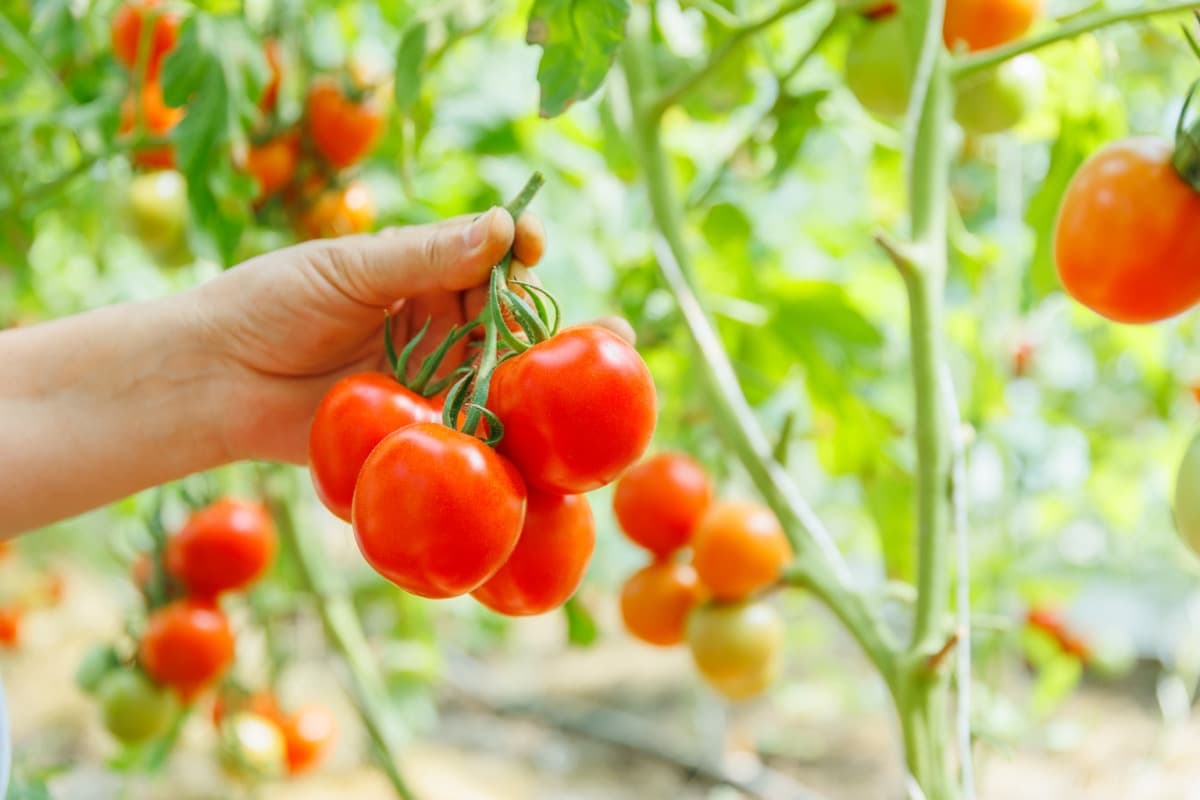
What is Weed Management in Tomato Crop?
Weed management in tomato crops, particularly in the case of Tomato (Lycopersicon esculentum) cultivation in Brazil, plays a pivotal role. It represents a significant portion of crop production expenses. Achieving high yields and top-quality fruit hinges on effective weed control. This discussion delves into the detrimental consequences of weed interference in tomato crops, regardless of whether the tomatoes are grown from transplanted seedlings or sown directly in the field.
Understanding the Importance of Weed Management in Tomato Cultivation
Weed management in tomato cultivation is crucial as weeds can significantly reduce yields by competing for essential resources such as space, light, water, and nutrients. They weaken the crop stand and can impede harvest efficiency. Some weeds act as hosts for pests like insects, diseases, or nematodes, exacerbating the crop’s vulnerability.
Timing Matters: Weeds are most competitive when they emerge before or around tomato planting, up to about 6 to 8 weeks after crop emergence (fewer weeks when using transplants). After this period, tomatoes become more competitive and are less affected by late-germinating weeds. However, late-germinating weeds can still produce seeds and interfere with the harvest.
Comprehensive Strategies: Effective weed management encompasses various strategies, including crop rotation, cultivation, proper field preparation, sanitation, irrigation management, and careful selection of herbicides.
Herbicide Selection: Herbicides play a crucial role in weed control. The herbicide choice depends on the weed species present, the grower’s cultural practices, and the crops to be planted after tomatoes. Herbicides can be classified as preemergence (controlling weeds after germination but before emergence, with residual control) or postemergence (controlling emerged weeds with limited residual control).
Herbicide Absorption: Preemergence herbicides are absorbed by roots, emerging shoots, or both, while leaves absorb postemergence herbicides and stems. Some herbicides have both preemergence and postemergence activity.
Soil Moisture Consideration: Herbicides work best when soil moisture is adequate for plant growth. However, they should not be applied in excessively wet soil, as this can lead to compaction and uneven herbicide distribution where mechanical incorporation is necessary.
In case you missed it: How to Stake Your Tomato Plants: With Simple Steps, Step-By-Step Process, Methods, and Different Ways

Identifying and Classifying Common Weeds in Tomato Fields
- Managing weeds effectively in tomato cultivation is crucial for maintaining crop health and maximizing yields. To achieve this, it’s essential to be acquainted with common and scientific names of weeds and adopt integrated weed management strategies.
- Common weeds that frequently trouble tomato crops include Barnyardgrass (Echinochloa crus-galli), Bermuda grass (Cynodon dactylon), Field Bindweed (Convolvulus arvensis), and Broomrape (Orobanche ramosa), among others. These weeds compete for resources and can harbor pests and diseases.
- Integrated weed management combines various approaches, such as cultural practices, herbicide use, and crop rotation. Tailoring herbicide treatments based on weed susceptibility is key. The provided table offers guidance in this regard.
- Additionally, knowing these weeds’ growth stages and characteristics aids in their identification and control. Weeds like Dodders (Cuscuta spp.), Groundcherries (Physalis spp.), and Pigweeds (Amaranthus spp.) can be particularly problematic.
Special Weed Problems in Weed Management in Tomato Crop
Dodder Management
- Parasitic Nature: Dodder is a parasitic plant that relies on suitable hosts like tomatoes, safflower, sugarbeets, and others for survival.
- Challenges of Elimination: Traditional crop rotations may need to effectively eliminate dodder due to its broad host range and long-lasting seeds.
- Control Measures: Host tomato plants should be removed as soon as dodder is detected to control dodder. If dodder is flowering, host plants must be removed and burned to prevent seed spread. Pendimethalin (Prowl H20) preemergence applications can reduce dodder germination by 80%. Certain tomato varieties, such as Heinz 9492, 9553, resist dodder infestation.
- Timing Matters: Dodder germinates primarily between March 1 and May 20, so late planting can help mitigate dodder issues.
Field Bindweed Management
- Persistent Perennial: Field bindweed is a deep-rooted perennial that’s challenging to control once established.
- Effective Control: Trifluralin (Treflan) layby treatment can control seedling field bindweed. Seedlings are distinguishable from established plants by cotyledons.
- Cultivation for Control: Established plants require cultivation for control, particularly in drip-irrigated fields.
- Crop Rotation: Field bindweed can be controlled with glyphosate treatment in the fall following a cereal crop.
- Summer Blading: In heavily infested fields, a reclamation blade can be used during summer months following a crop that depletes soil moisture to 18-20 inches, severing and dehydrating bindweed rhizomes.
Nightshade Management
- Related Weeds: The nightshade family includes black nightshade, hairy nightshade, groundcherry, and others, which are resistant to many herbicides commonly used in tomatoes.
- Pre-Plant Treatment: Soil fumigation with metam sodium (Vapam) is effective.
- Herbicide Control: Rimsulfuron (Matrix) offers control when applied post-seeding or transplanting as a preemergence treatment and incorporated with water within 5-7 days. It can also provide postemergence control at the cotyledon stage.
- Rotation Helps: Rotating crops with effective herbicides against nightshade, like Roundup Ready corn or cotton, reduces seed levels in the soil.
- Deep Plowing: Deep plowing with specialized plows can significantly reduce nightshade seed emergence.
In case you missed it: State Wise Tomato Farming Seasons in India: Growing Best Varieties and Production Yield
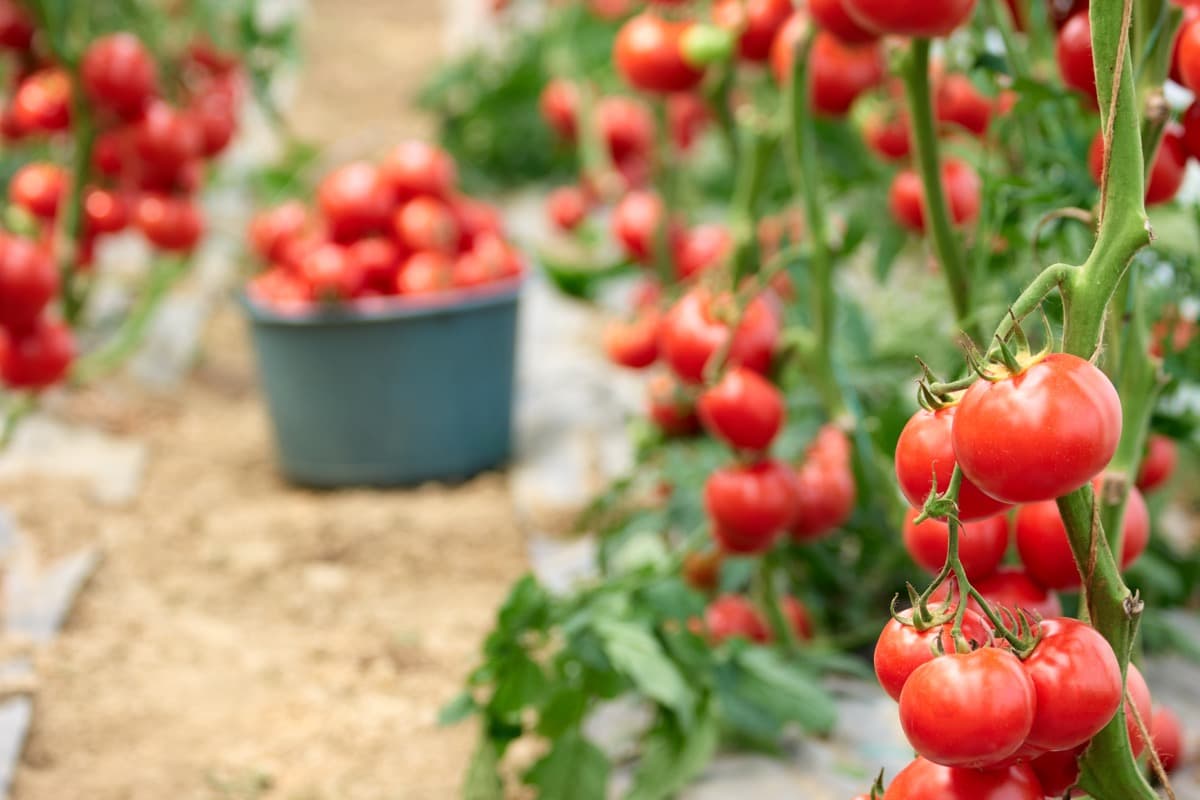
Nutsedge Management
- Perennial Reproduction: Nutsedge reproduces primarily through tubers that remain viable in the soil for years.
- Tuber Suppression: S-metolachlor (Dual Magnum) at layby partially suppresses yellow nutsedge. Halosulfuron (Sandea) is effective postemergence.
- Preplant Treatment: Metam sodium helps with yellow nutsedge control in the tomato seedline.
- Cultivation Timing: Cultivation should be done by the 5- or 6-leaf stage to prevent new tuber formation.
- Rotation Benefits: Rotating to different crops with herbicides that suppress nutsedge, like corn or beans, helps avoid weed buildup.
- Specialized Plowing: Specialty plows can invert the soil to at least 12 inches deep to minimize nutsedge emergence in the tomato field.
Effective Weed Management in Tomato Crop by Integrated Weed Management
- Weed Impact: Weeds compete with tomatoes for space, light, water, and nutrients, weakening crop growth and reducing harvest efficiency. Some weeds can even harbor pests and diseases.
- Timing Matters: Weeds are most competitive if they emerge before or around tomato planting until about 6 to 8 weeks after crop emergence (fewer weeks with transplants).
- Integrated Weed Management: Effective weed management involves various practices, including crop rotation, cultivation, field preparation, sanitation, irrigation management, and herbicide selection.
- Herbicide Classification: Herbicides are categorized as preemergence (controls germinating seeds before emergence, providing residual control) and postemergence (controls emerged weeds but lacks residual control). Some herbicides have both preemergence and postemergence activity.
- Moisture Consideration: Herbicides work best with adequate soil moisture but should only be applied in moderately wet soil to prevent compaction.
- Monitoring: Regular weed surveys are essential. Observe the field after planting but before weeding and just before harvest. Record findings and note the location of seed-producing weeds for targeted control. Pay attention to perennials and other potential sources of weed invasion.
Weed Management Postharvest and Before Planting
Crop Rotation: Rotating crops can effectively control challenging weeds by altering environmental conditions or permitting alternative control methods. Corn, alfalfa hay, wheat, cotton, rice, dry beans, onions, carrots, and safflower are suitable tomato rotational crops. Avoid monocropping and crops like potatoes, peppers, and eggplant due to genetic similarities and shared herbicides.
Field Preparation: Choose fields with minimal weed infestations. Weed-free canal banks and clean equipment prevent weed seed transfer. Deeply burying seeds and tubers (at least 12 inches) with a specialized moldboard plow reduces nightshade and nutsedge populations.
Soil Solarization: This method can control soilborne diseases, nematodes, and weeds effectively in June, July, or August, requiring 4 to 6 weeks of application.
Soil Fumigation: Metam sodium, metam potassium, 1,3-D, 1,3-D, plus chloropicrin can control many weeds and soilborne pests. Allow adequate time between fumigation and transplanting to prevent crop damage.
Herbicides: Fall or winter herbicide applications on beds can enable early planting in fields with wet soil conditions. Adequate rainfall is required to break down some fall-applied herbicides. Postharvest, irrigate, and apply contact herbicides for weed control, especially for perennial weeds like field bindweed and little mallow.
In case you missed it: Tomato Farming Business Plan: A Production and Cultivation Guide for Beginners
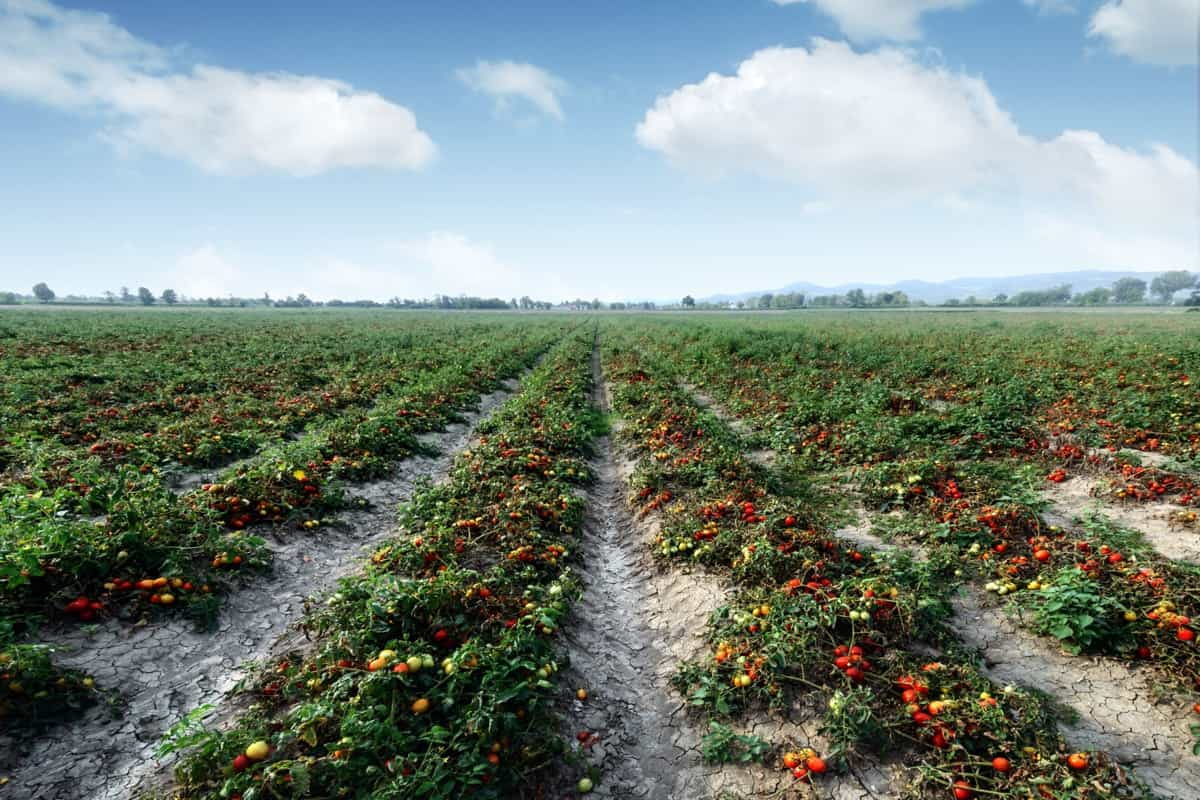
Pre-Plant Herbicides: Some herbicides are best applied just before planting and incorporated into the soil. Band treatments reduce herbicide costs, require sprinkler irrigation, and lower the risk of herbicide carryover. Postemergence treatments may also be needed before planting for emerged weeds. Herbicide mixtures can enhance control based on expected benefits, residual activity, and tomato selectivity.
Weed Management at Planting Tomato Crop
Crop rotation is a powerful method for weed control, disrupting environmental conditions that favor certain weed species. Suitable rotational crops for tomatoes include corn, alfalfa hay, wheat, cotton, rice, dry beans, onions, carrots, and safflower. Avoid monocropping and genetically similar crops like potatoes, peppers, and eggplant.
Field preparation involves minimal weed infestations, clean canal banks, and specialized moldboard plows to reduce nightshade and nutsedge populations. Soil solarization, applied in June, July, or August, can control soilborne diseases, nematodes, and weeds. Soil fumigation can effectively control many weeds and soilborne pests using metam sodium, metam potassium, 1,3-D, or 1,3-D plus chloropicrin.
Herbicides, applied in fall or winter, enable early planting in fields with wet soil conditions. Pre-plant herbicides, such as band treatments, reduce costs and carryover risk. Postemergence treatments are also considered for emerging weeds. Herbicide mixtures can enhance control based on expected benefits, residual activity, and toma to selectivity.
Best Practices for Effective Weed Control in Tomato Farming
Tomato cultivation can be effectively managed through different strategies. Crop rotation, which disrupts conditions favoring specific weed species, is a potent method for combating weeds. Avoid monocropping and genetically related crops like potatoes, peppers, and eggplant. Field preparation should start with minimal weed infestations and ensure clean canal banks and equipment. Specialized moldboard plows can reduce nightshade and nutsedge populations. Soil solarization, applied in June, July, or August, can control soilborne diseases, nematodes, and weeds.
Fumigation with substances like metam sodium, metam potassium, 1,3-D, or 1,3-D plus chloropicrin can control weeds and soilborne pests. Herbicides can be applied in the winter for early planting in fields with wet soil conditions. Postharvest, irrigation, and contact herbicides can manage persistent weeds. Pre-plant herbicides, such as band treatments, can be most effective when applied just before planting and incorporated into the soil. Herbicide mixtures can be chosen based on expected benefits, residual activity, and compatibility with tomato crops.
Tomato Preplant Weed Control
Tomato preplant weed control options include Metam Sodium (Vapam HL), Carfentrazone-Ethyl (Aim), Paraquat (Firestorm, Parazone), Oxyfluorfen (Goal), Napropamide (Devrinol, Devrinol DF-XT and Devrinol 2-XT), Pendemthalin (Prowl H2O), Trifluralin (Treflan HFP and others), Halosulfuron-Methyl (Profine 75, Sandea), S-Metolachlor (Brawl, Dual Magnum), and Fomesafen (Reflex).
In case you missed it: How to Start Tomato Farming in the USA: A Step-by-Step Production Guide to Planting to Harvesting
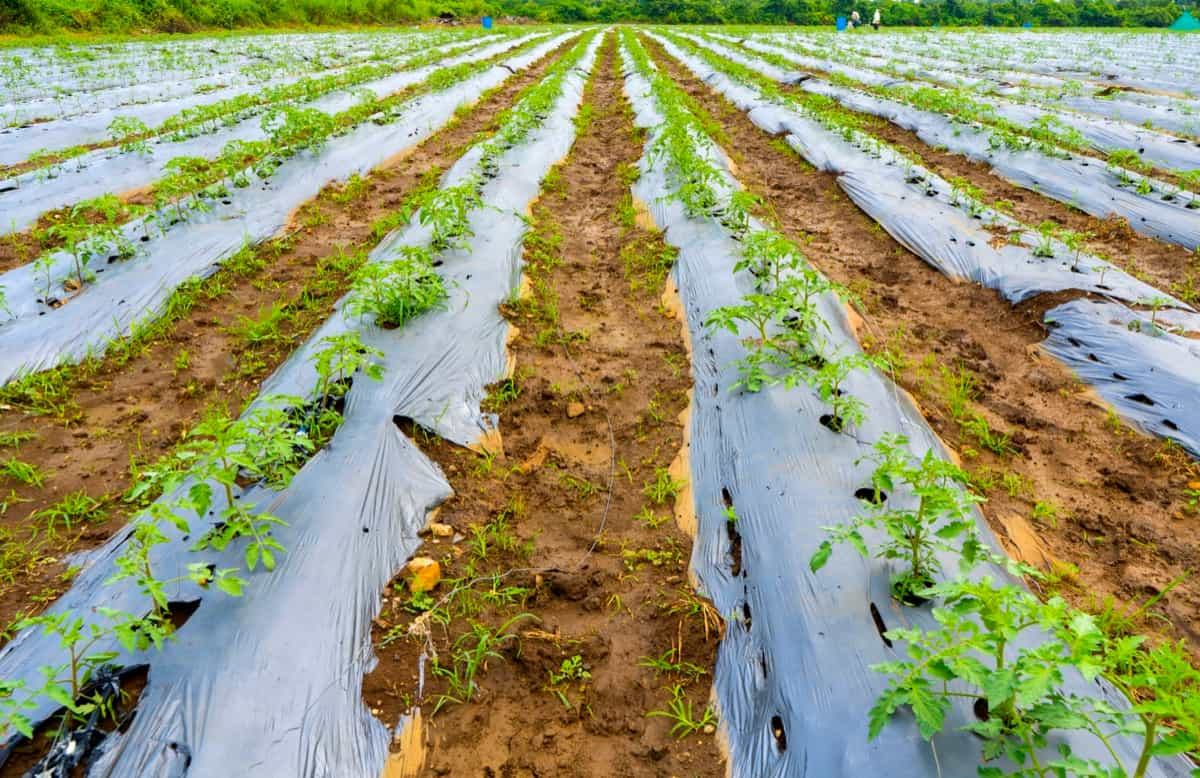
Metam Sodium effectively suppresses or controls most annual grasses and broadleaf weeds, with the full rate required for nutsedge control. Carfentrazone-Ethyl is suitable for contact kill of all green foliage, primarily used for stale bed applications. Paraquat provides contact kill of all green foliage when applied, suitable for stale bed application. Oxyfluorfen is effective against broadleaf weeds, including Carolina geranium, cutleaf evening primrose, and some annual grasses.
Tomato Postemergence Weed Control
Tomato postemergent weed control options include DCPA (Dacthal), Halosulfuron-Methyl (Profine 75, Sandea), Metribuzin (TriCor DF, Metribuzin), Rimsulfuron (Matrix), Clethodim (Arrow, Clethodim, Intensity, Select), Sethoxydim (Poast), Trifloxysulfuron-Sodium (Envoke), Carfentrazone-Ethyl (Aim), Napropamide (Devrinol, Devrinol DF-XT and Devrinol 2-XT), Pendemthalin (Prowl H2O), and Paraquat (Firestorm, Parazone and Gramoxone SL). These options are effective against annual grasses and small-seeded broadleaf weeds, yellow and purple nutsedge, and certain broadleaf weeds.
Metribuzin controls annual grasses and broadleaf weeds, including several specific species. Clethodim is suitable for controlling grasses, while Sethoxydim is suitable for controlling grasses. Trifloxysulfuron-Sodium is effective against specific broadleaf weeds and nutsedge. Carfentrazone-Ethyl is suitable for controlling most broadleaf weeds. Napropamide is effective against annual grasses and small-seeded broadleaf weeds, while Pendemthalin is suitable for controlling various weeds. Paraquat provides contact kill of all green foliage.
In case you missed it: High Yield Tomato Varieties in India: A Farmer Guide for Good Profits
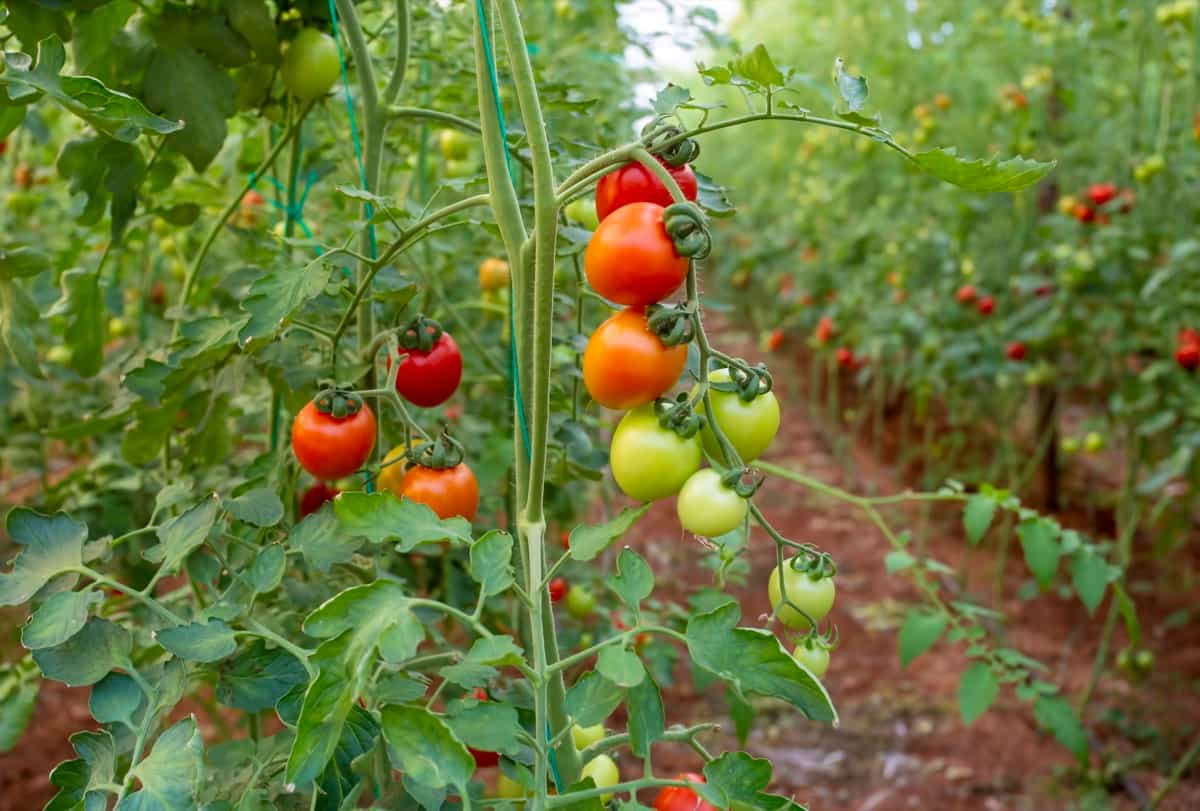
Conclusion
Effective weed management is crucial for successful tomato crop cultivation. Common weeds in tomato fields can reduce yields and hinder growth. To combat these challenges, a range of herbicides safe for use on tomatoes, with specific modes of action, are available. Careful herbicide selection and application are essential for a thriving tomato crop.
- Types of Pesticides Used in Agriculture: A Beginner’s Guide
- Economical Aquaculture: A Guide to Low-Budget Fish Farming
- 15 Common Planting Errors That Can Doom Your Fruit Trees
- How to Make Houseplants Bushy: Effective Tips and Ideas
- Innovative Strategies for Boosting Coconut Pollination and Yield
- Pollination Strategies for Maximum Pumpkin Yield
- The Complete Guide to Chicken Fattening: Strategies for Maximum Growth
- Natural Solutions for Tulip Problems: 100% Effective Remedies for Leaf and Bulb-Related Issues
- Revolutionizing Citrus Preservation: Towards a Healthier, Greener Future
- Natural Solutions for Peony Leaf and Flower Problems: 100% Effective Remedies
- Maximizing Profits with Avocado Contract Farming in India: A Comprehensive Guide
- Natural Solutions for Hydrangea Problems: 100% Effective Remedies for Leaf and Flowers
- The Ultimate Guide to Choosing the Perfect Foliage Friend: Bringing Life Indoors
- From Sunlight to Sustainability: 15 Ways to Use Solar Technology in Agriculture
- The Ultimate Guide to Dong Tao Chicken: Exploring from History to Raising
- The Eco-Friendly Makeover: How to Convert Your Unused Swimming Pool into a Fish Pond
- Mastering the Art of Delaware Chicken Farming: Essentials for Healthy Backyard Flocks
- 20 Best Homemade Fertilizers for Money Plant: DIY Recipes and Application Methods
- How to Craft a Comprehensive Free-Range Chicken Farming Business Plan
- Brighten Your Flock: Raising Easter Egger Chickens for Beauty and Bounty
- How to Optimize Your Poultry Egg Farm Business Plan with These Strategies
- Subsidy for Spirulina Cultivation: How Indian Government Schemes Encouraging Spirulina Farmers
- Ultimate Guide to Raising Dominique Chickens: Breeding, Feeding, Egg-Production, and Care
- Mastering the Art of Raising Jersey Giant Chickens: Care, Feeding, and More
- Ultimate Guide to Raising Legbar Chickens: Breeding, Farming Practices, Diet, Egg-Production
- How to Raise Welsummer Chickens: A Comprehensive Guide for Beginners
- How to Protect Indoor Plants in Winter: A Comprehensive Guide
- Ultimate Guide to Grow Bag Gardening: Tips, Tricks, and Planting Ideas for Urban Gardeners
- Guide to Lotus Cultivation: How to Propagate, Plant, Grow, Care, Cost, and Profit
- Agriculture Drone Subsidy Scheme: Government Kisan Subsidy, License, and How to Apply Online
- Ultimate Guide to Raising Araucana Chickens: Breed Profile, Farming Economics, Diet, and Care
- Bringing Hydroponics to Classroom: Importance, Benefits of Learning for School Students
- Ultimate Guide to Raising Polish Chickens: Breed Profile, Farming Economics, Diet, and Care
- Ultimate Guide to Raising Australorp Chickens: Profile, Farming Economics, Egg Production, Diet, and Care
- Silkie Chicken Farming: Raising Practices, Varieties, Egg Production, Diet, and Care
- Sussex Chicken Farming: Raising Practices, Varieties, Egg Production, Diet and Care